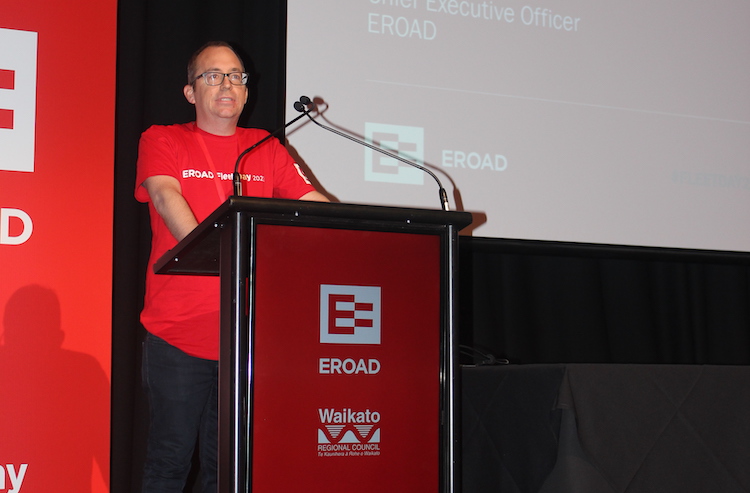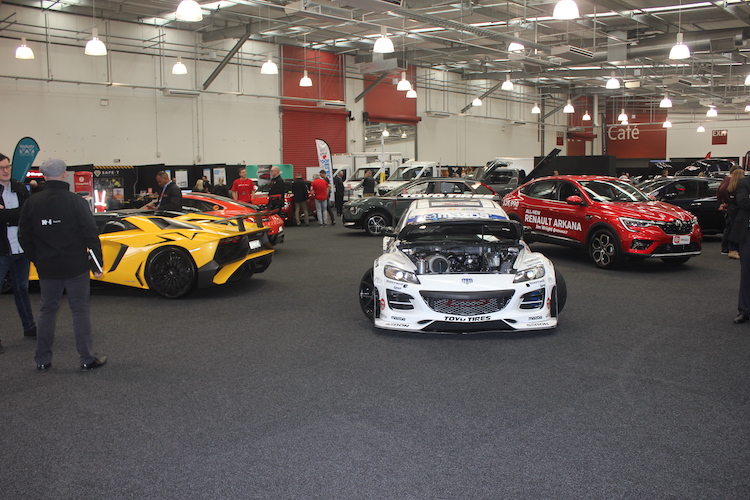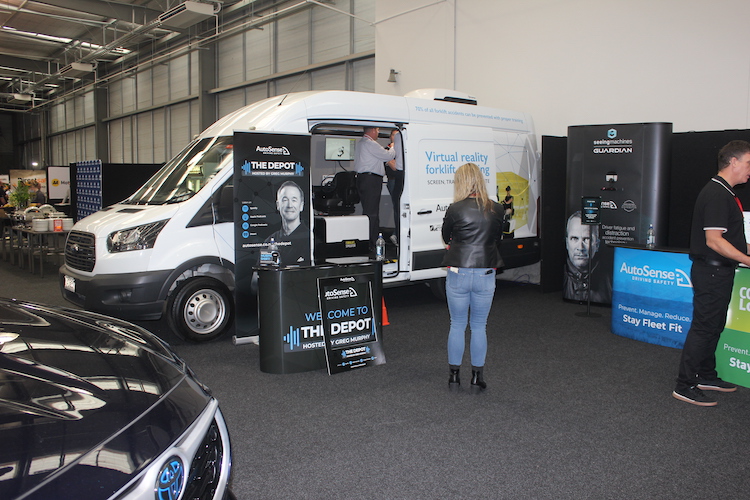Supported by EROAD and the Waikato Regional Council, more than 500 delegates from major fleets across the country attended Fleet Day 2022 held at the Claudelands Event Centre in Hamilton.
Electrifying the light and heavy vehicle fleet was the event’s major theme, with most of New Zealand’s light battery electric vehicle brands on display, as well as light duty and heavy duty electric trucks from E-Trucks, JAC, Fuso, Scania and Volvo.
There was a diverse group of expert speakers at the event covering all aspects of fleet operations including management and procurement of vehicles, the road to vehicle electrification, driver training, management and safety, as well as two industry panels, one on electrification and one on heavy transport.

EROAD chief executive Mark Heine opened the first session of the day, by thanking the more than 500 delegates from Australia and New Zealand for making this the most successful event yet and also thanking the 17 speakers in advance for their participation.
Heine says many fleets are looking at the future impact of electric vehicles on their operation.
“Reducing the carbon footprint is part of our goal towards sustainability and fleets are looking at data driven decisions,” he says.
Heine was followed by the Waikato Regional Council regional transport connections director Mark Tamura who says his organisation is focussed reducing emissions by electrifying its vehicle fleet but also by providing people the ability to leave the car at home.

National Strategy
Ministry of Transport supply chain manager Harriet Shelton told the delegates the ministry is developing an national freight and supply chain strategy and a programme for reducing emissions.
Shelton says the ministry itself does not own any vehicles.
“We look at the supply chain of shipping, road, rail, and air as a system of small, medium, and large operators and what happens when you tweak one part of it,” she says.
“System shifts are nothing new, before the internet we had cycle couriers delivering documents around the cities, they disappeared for a while but now bikes are rising again as electric cargo bikes are used to deliver goods in urban areas instead of trucks or vans.
Shelton noted that Auckland-based transport company Carr and Haslam began replacing the horse and cart fleet with its first internal combustion truck in 1922 and in 2021 it took delivery of its first battery electric truck, the Fuso eCanter.

Fleet leaders seek EV options
ACA Research director and partner Ben Selwyn says a survey of more than 200 fleets in Australia showed that approaches taken by organisations differed depending on their maturity. The survey divided the respondents into three separate groups, being leaders, mature and less mature.
Selwyn says the fleet leaders are looking for suppliers who can help their organisation make better decisions around fleet optimisation. More than 71% of this group use fleet management organisations and more than 28% of them use telematics.
According to Selwyn fleet leaders have leapt into Hybrid vehicles as they change their mix of vehicles and there is also an appetite to purchase battery electric vehicles assuming supply is available.
“Leaders are just not large fleets, it is more a reflection on the way the fleet is managed and how the decisions are taken in the organisations,” he says.
Powering the EV Fleet
Transpower senior principal engineer Andrew Renton told the Fleet Day audience that electricity is the most efficient way to decarbonise transport as legislation requires more new light and heavy electric vehicles to be sold by 2030.
Renton says the country is building enough infrastructure to support demand from renewable resources such as solar and wind in addition to the existing hydro capacity.
He says New Zealand currently has 9000 megawatts of capacity in the electricity system and current peak demand sits at 7200 megawatts. He notes that using solar and wind generation allows the network to conserve hydro generation for when there is less sun and wind available.
More to follow.








